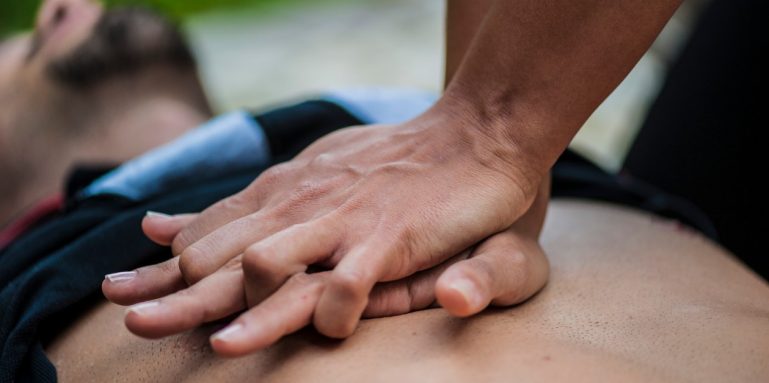
First aid for cardiac arrest
If someone’s heart suddenly stops, every second counts. They need chest compressions right away, and, if possible, you should use a defibrillator to help. This guide will prepare you for an emergency.
Each year, about 8,000 people go into cardiac arrest. Only around 5 per cent survive it outside of hospital. You can improve the unconscious person’s chances of survival by immediately calling emergency services and resuscitating them. Chest compressions are the most important first aid measure in this instance.
Signs of cardiac arrest
- The person falls over or collapses in a chair
- They don’t respond when you call or shake them
- They’re not breathing, or are gasping for breath
A cardiac arrest can happen without warning. Often, however, a heart attack or cardiac arrhythmia can precede cardiac arrest. Do you know the symptoms of a heart attack? Read our blog post to find out.
As a partner of the Swiss Red Cross, Helsana is committed to ensuring that as many people as possible can perform first aid at any time. For customers who have COMPLETA outpatient supplementary insurance, Helsana now covers 75% or a maximum of CHF 200 per calendar year of the cost of selected courses run by the Samaritans Switzerland, a Swiss Red Cross rescue organisation.
First aid for cardiac arrest
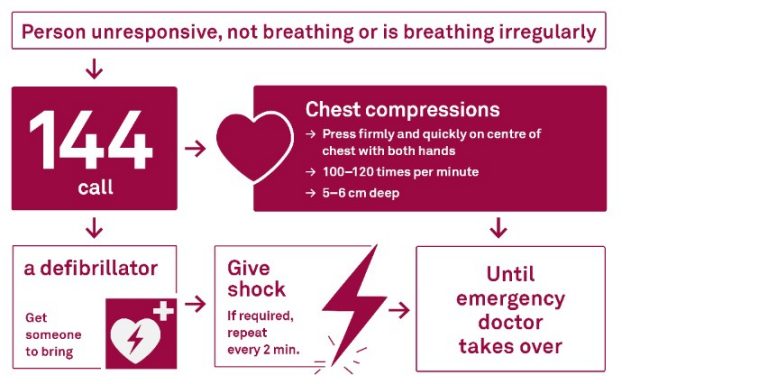
If the person isn’t responding, isn’t breathing or isn’t breathing normally, their heart or circulation may have stopped. Act fast! Call for help immediately.
- Call 144
Where are you?
What has happened?
How many are injured?
What are their injuries?
What is your name? - If possible: Ask someone to bring a defibrillator
If you are not alone, insist that someone bring a defibrillator. Once you have the defibrillator, turn it on and follow its instructions closely. - Get into the CPR position
- Kneel beside the patient
- Put the heel of your hand in the centre of their chest (breastbone), other hand on top
- Arms straight, shoulders positioned directly over your hands (this position is the best way to transfer your strength when doing the compressions) - Compressing the chest
- Push firmly on centre of the breastbone, releasing fully each time
- 100 to 120 times per minute (= 2 times per second)
- Compression depth 5 to 6 cm
- Continue until emergency services take over or, in best case, patient starts breathing.
- Your own safety is paramount. Don’t put yourself in any danger, or we’ll end up with two patients. A broken rib is better than dying: don’t be afraid of injuring the person. Sometimes one or more ribs, or even the breastbone, can break. These are not life-threatening injuries. Anything is better than doing nothing.
- Look for people to help you. Take it in turns. Tests show that people can no longer apply enough pressure after just two minutes.
- Push quickly: with chest compressions, both technique and speed are key. Tip: imagine the song “Stayin’ Alive” by the Bee Gees and perform compressions in time to its beat.
Mouth-to-mouth: only if you have training
Untrained bystanders should not perform mouth-to-mouth resuscitation. They’ll lose too much time and won’t have enough of an effect. It’s better to focus fully on chest compressions. With chest compressions, the remaining oxygen in the blood can circulate and keep supplying the brain for a while.
Trained first aiders alternate between chest compressions and mouth-to-mouth (or mouth-to-nose) resuscitation. With CPR, apply the 30:2 rule: alternate between 30 chest compressions followed by 2 rescue breaths.
Resuscitation with defibrillator (AED)
If several first aiders are nearby, after the emergency call, one person should get the defibrillator while the others perform chest compressions.
- Follow the defibrillator instructions. Remove clothing from the chest.
- Stick on the electrodes: one on the right side of the person’s chest below the collarbone, the other on their left side below their armpit.
- The defibrillator will tell you what to do next with clear verbal instructions.
AED is an acronym for automated external defibrillator. It is a medical device for resuscitating a person whose heart has stopped (cardiac arrhythmia, cardiac arrest). It can’t harm them: the defibrillator analyses whether a shock is actually needed. A defibrillator can also be used to resuscitate children over eight years of age or from 25 kg. Some defibrillators have special electrodes for younger children. Follow the instructions on the AED.
Chest compressions on small children
For chest compressions on small children, only use the heel of one hand, and for babies, two fingers. The compression depth is one third of the chest diameter.

Beat Brunner works as the head of «Education and Volunteer Management» at the Samaritans Switzerland – a rescue organisation of the Swiss Red Cross. In his position as a first aid training expert, he trains lay people from a wide variety of backgrounds. He regularly provides first aid services in organisations and at events. André Roggli gave the editorial team advice and input for this article.
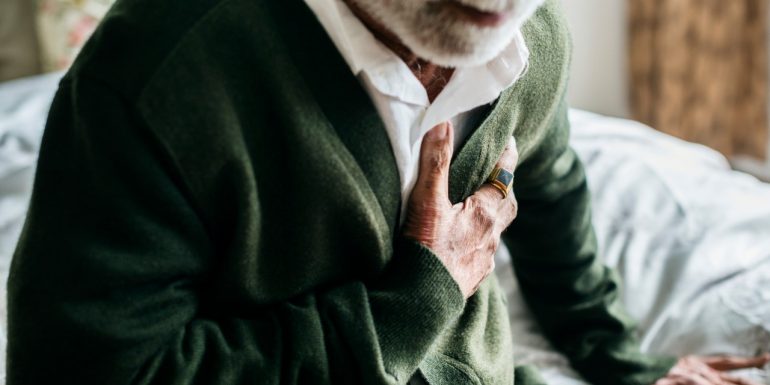
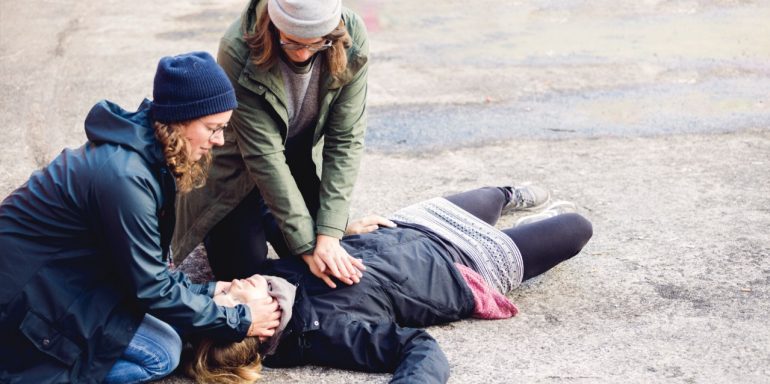
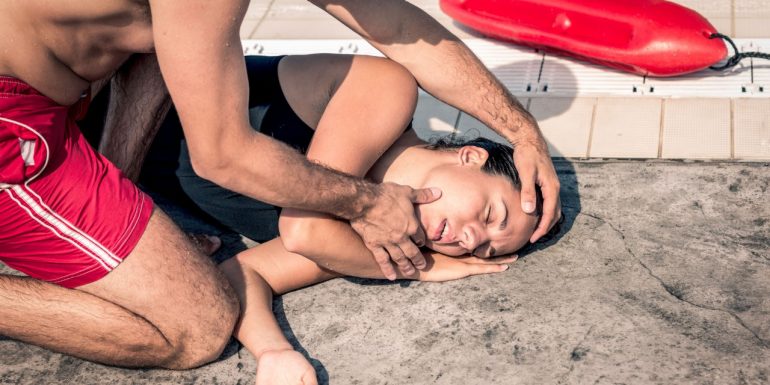
Newsletter
Find out more about current health issues every month and get all the information you need about our attractive offers from all Helsana Group companies * delivered by e-mail to read whenever it suits you. Our newsletter is free of charge and you can sign up here:
We did not receive your information. Please try again later.
* The Helsana Group comprises Helsana Insurance Company Ltd, Helsana Supplementary Insurances Ltd and Helsana Accidents Ltd.